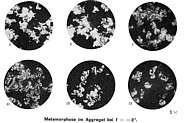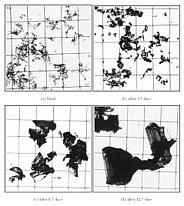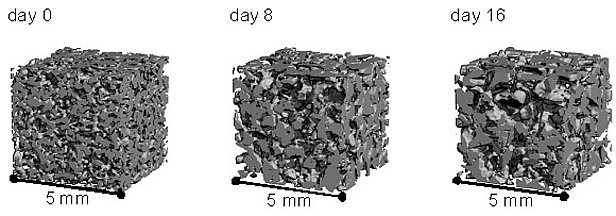Seminal work published in 1939 ¶
Snow metamorphism describes the transformation of ice crystals contained in the snow. It is the reason why snow does not remain powdery, and why weak layers form in the snowpack. Established back in 1931, the Commission for Snow and Avalanche research was already taking an interest in this topic, and in 1939 published the ground-breaking work “Der Schnee und seine Metamorphose” (English translation: Snow and Its Metamorphism), which remains highly regarded across the world to this day. It provides a synoptic review of the experiments that snow researchers were conducting on the Weissfluhjoch at the time. Although the chapter that addresses the subject of metamorphism is rather brief, the publication repeatedly highlights the significance of this structural change to our understanding of snow’s mechanical and physical properties. But the metamorphism experiments were very time-consuming and in most cases could be performed in the lab only with individual ice crystals. Even back then, however, the researchers already realised that they needed to focus their attention not on a single crystal, but on the snow structure in its entirety. They were also aware that the snowpack’s own mass, the snow temperature, and in particular the temperature differences within the snowpack, were responsible for continuously transforming the deposited snow.
Breakthrough thanks to X-ray tomography ¶
Snow metamorphism remained a key research topic at the SLF during the decades that followed as well. Between 1950 and 1973, for example, its long-serving director, Professor Marcel de Quervain, published numerous scientific papers on the subject. In later years, researchers investigating metamorphism took an ever closer interest in the structure and microstructure of snow. In order to examine the development of the process over time, however, they had to use different, but similar samples for each time step. It was only recently that a breakthrough was achieved. Thanks to X-ray tomography, the SLF succeeded in examining one and the same snow sample throughout its development in the cold laboratory in a wide variety of conditions, and producing a 3D representation of the transformation in the ice structure.
Snow classification – a crucial instrument for practitioners ¶
Practitioners wishing to assess the snow structure in the field, however, do not have access to an X-ray scanner. Over time they have established correlations between observable snowpack properties and the formation of avalanches with the aid of simple tools. Although our understanding of the processes underlying these observations has changed considerably, the methods developed by practitioners continue to prove invaluable. In this context, the recently revised international snow classification, which SLF employees have been instrumental in shaping since 1954, plays a crucial role. It provides all interested scientists and practitioners, among others, with a common nomenclature for snow in all its manifestations.
Snowpack simulation ¶
Only very few of the countless computer models that exist today for simulating the snowpack give consideration to metamorphism. One of these is the Snowpack model that was developed at the SLF. Capable of answering questions in a wide variety of disciplines, it is used primarily to support and improve avalanche warning services. Among its other fields of application are snow hydrology and piste preparation. To this day, however, Snowpack still relies on highly simplified modelling concepts and empirical equations. In future, the new insights obtained through X-ray tomography will be applied to developing the model further.



